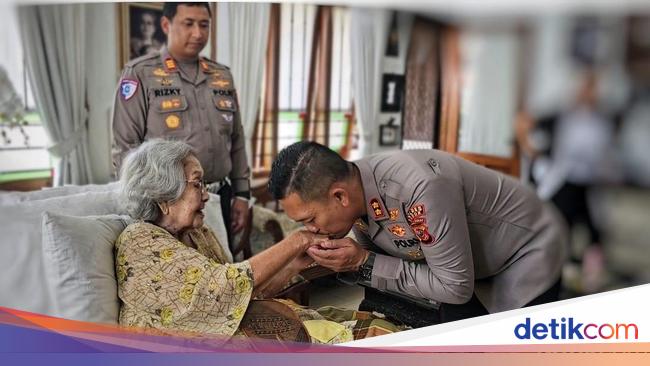In every case, there are five basic questions – who, what, when, where and why. In the mushroom trial, people were familiar with the answers to four.
In July 2023, Erin Patterson invited her estranged husband, Simon, her in-laws, Don and Gail, and Gail’s sister, Heather Wilkinson, and her husband, Ian, for lunch at her Leongatha home. Simon declined. She served individual beef Wellingtons, which were poisoned with death cap mushrooms, resulting in three deaths and only one survivor.
The question left for the jury was why. It was either an innocent and tragic mistake or a deliberate act of murder. There was no middle ground.
For more than 40 years, I have observed that jurors plucked from the community have to deal with the most complex cases. The first thing you notice is how diligent they are – concentrating, taking notes and putting their own lives on hold.

Erin Patterson arrives at court in Morwell in May.Credit: AFP
The next is how brave they are – often sitting in judgement against seriously dangerous offenders.
Despite the marathon legal arguments and the testimony of expert witnesses the Morwell jury needed to use common sense rather than common law to examine 10 key questions.
- Why did Erin Patterson fake a cancer diagnosis?
- Why did it take her nearly two years from the fatal lunch to raise the possibility that she accidentally picked death cap mushrooms in the wild?
- Why a woman who shared her love of mushrooms with anyone who would listen could not produce one witness to corroborate her keen interest in foraging the wild ones?
- Why could a person with a remarkable memory not recall the shop, street, or suburb where she bought Asian dehydrated mushrooms, presumably paying cash and leaving no credit card record?
- Why there have been no reports of similar poisonings from a commercial source?
- Why would she feed leftovers to her children when her lunch guests were critically ill?
- Why would she refuse medical assistance for herself and her two children when told it could be a matter of life and death?
- Why did she serve individual beef Wellingtons when the recipe called for a single loaf?
- Why did she serve her own lunch on a different coloured plate?
- Why did she try to sabotage the police investigation by dumping the dehydrator, losing a phone and resetting another?
We are told repeatedly that the jury system is the truest form of justice.
Then why is it that so much information is kept from them?
In many pre-trial discussions, part of the prosecution’s case is knocked out before a jury is impanelled rather than allowing the jurors to decide the evidentiary value themselves.
In one case I covered, the jury acquitted a man of murdering his wife. The prosecution was that he had hired a hitman, and even though the killer testified that the husband paid him, the accused walked.
On verdict, the defence lawyer turned to the prosecutor and said, “You were robbed.” The defence lawyer was Nicola Gobbo.

Nicola Gobbo.Credit: ABC
When I reported on the case, including mentioning the alleged fee paid, a juror contacted me and said, “You can’t even get the amount right.”
I then told him I was talking about a second hitman who had been approached and knocked back the contract, a fact the judge decided couldn’t be admitted in evidence.
‘How dare a jury be guilty of independent thought.’
“Don’t tell me that,” the distressed juror said as it dawned on him the husband may well be guilty. I told him he could only make a decision on the facts available. It wasn’t his fault.
When Jetstar pilot, Greg Lynn, stood trial for the murders of High Country campers Carol Clay and Russell Hill, the jury was told that in the admissible record of interview that Lynn did not lie once.
They weren’t told that in the 1500 questions and answers that were not played to the jury he lied through his teeth.
The jury found him guilty of Clay’s murder and not guilty of Hill’s. The defence is appealing with one of the grounds being that that option was not given to them during the trial.
How dare a jury be guilty of independent thought.
One frustrated cop told me detectives are forced to perjure themselves just about every time they testify. “We take the oath, ‘I swear to tell the truth, the whole truth and nothing but the truth’ but we are never allowed to tell the whole truth.”
Loading
The Morwell verdict is not the end of the story but the end of a chapter. The bitterly disappointed defence team will now have to dust themselves off and look for grounds to appeal while preparing a plea submission.
They will examine every word of transcript to find grounds to show either the jury lost the plot, were misled about the law in the judge’s rulings or were given inadmissible evidence that tainted their verdict.
The trouble here is that the very diligent Justice Christopher Beale (a ten-year veteran of the court, who worked as an accomplished defence and prosecution barrister) appeared to be extremely sensitive to Patterson’s rights to a fair trial having to navigate a course through the highest profile case on the books.
The plea submission is not to argue about guilt or innocence but to persuade the judge to go easy on their client.
In some cases, the defence raises issues of mitigation. Their client committed the crime because they were provoked, had a bad childhood, were addicted to drugs or got out of bed on the wrong side.

Colin Mandy, SC, outside court last week.Credit: Jason South
But Patterson’s team can’t use that tactic because she maintains her innocence. They will say she is a loving mother, who will be deprived of her children while in jail, has no criminal record, her notorious reputation will make her a target for fellow inmates and that she is a sad and lonely person, shunned by many and doomed to a miserable existence until the day she dies.
Loading
There will also be victim impact statements. Three decent and loved members of the Gippsland community have died and a fourth just survived.
As the head of the homicide squad, Detective Inspector Dean Thomas said, “I ask that we acknowledge those people and don’t forget them.”
Erin Patterson is 50. She can expect to be sentenced to a maximum of life imprisonment. The only issue is the minimum term that may well sit somewhere between 35 and 40 years.

One of the first press photographs taken of Erin Patterson.Credit: The Age
Patterson is an enthusiastic true-crime fan. Now she is the subject of books, podcasts, dramas and documentaries. Stories about her have appeared in the London Times, New York Times, and French newspapers.
Eventually, as time moves on, she will become the answer to a question on crime trivia nights – what’s the name of the lady from the mushroom case?
The Morning Edition newsletter is our guide to the day’s most important and interesting stories, analysis and insights. Sign up here.


















































